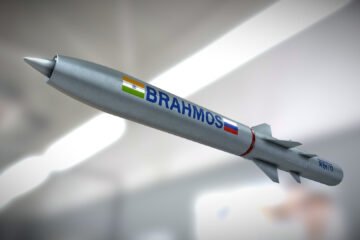Indian Space Militarization and Deterrence Stability of South Asia

Introduction
Space is considered the most modern paradigm of warfare in the contemporary era. The reliance of military organizations on spatial capabilities has increased all over the world. While discussing the strategic stability of South Asia, the Indian militarization of Space and modernization in its spatial capabilities are highly concerned. India is one of the most emerging and latest countries to utilize its spatial capabilities for military purposes has recently done an Anti-Satellite weapon’s test on March 27, 2019. A number of military satellites are being deployed by the Indian Space Research Organization in the earth’s orbit. Indian Space Research Organization has progressed to a greater extent in a way that ISRO is able to launch a string of satellites in earth orbit and interlink them with Indian military forces for defence purposes.
Space being a warfare front
The military use of space is concerned with three major aspects of intelligence, surveillance and reconnaissance (ISR) capabilities. This includes an exchange of communication through satellites during military operations, getting real-time images of targeted territorial areas and other navigational purposes. Other space capabilities employed by the military defence that serve as a force multiplier includes weather forecast and early warnings through radar interconnectedness. Henceforth, space is ascertained as a significant aspect of a state’s military capabilities. After Land, Air and Sea, the fourth frontier of modern warfare are considered as Outer Space Warfare. India is quickly advancing the race of space warfare.
Space as a pivot of Indian Defence
Each year India is enhancing its space defence spending by 11 per cent, and about a 20 per cent increase is done in the year 2019-20. An active alienation is being seen between Indian space agency ISRO (Indian Space Research Organization) and The DRDO (Defense Research and Development Organization) of India. ISRO has successfully gained its own Indian Regional Navigation Satellite System, operationally named as ‘NavIc’ that is utilized by Indian forces. Along with that Indian military has also deployed a number of space-borne sensors and detectors. Since 2014 Indian Space research Organization has launched several hi-tech space-borne military communications systems, that includes electro-optical sensors and SAR based satellites.
Indian Sattelites Arena
Among many others, the GSAT series of Geo Imaging Satellites is an Indian dual-use spatial capability that is equipped with optical space sensors and is employed in low earth orbit. Indian Navy has utilized GSAT-7 for naval command and communication and has expanded its operational capabilities in the Indo-Pacific Ocean. GSAT-7 of ISRO is capable of transmitting real-time imagery and information of Sea-shores and warships along with underwater submarines. While GSAT-7A is used by Indian Air Force, which works on a network-centric approach. This system makes IAF capable of interlinking its several airbases with airborne fleets and radar systems. The network-centric approach of GSAT-7A enables India to form an interlinked triangle body of its three military forces.
Indian first-ever spaceborne pure military satellite system was launched in the form of EMISAT series, with a spacecraft termed as ELINT. It was deployed in order to locate the radars of the enemy by using electromagnetic spectrums near border areas. HySIS series of Indian spacecraft is the hyperspectral imaging satellites based on an infrared sensor capable of detecting near & shortwave infrared microwaves emitted by radars of the enemy. RISAT series of ISRO is the radar imaging spy satellites that use X-bands that are capable of working with Synthetic aperture radar (SAR). CARTOSAT series of space-borne electro-optical observers is the most powerful and precise system of the Indian space military program. Out of the total of nine satellites of this series, the most powerful among all is the CARTOSAT-3 third-generation spacecraft with a ground resolution power of 0.25m. This exhibits the quest of India for long-term hegemonic designs in all the paradigms of warfare.
Implications on South Asia
As far as the strategic stability of the South Asian region is concerned, it is mainly comprised of two main actors of the region, India and Pakistan. While maintaining stability in the region, it is very important to create a symmetrical balance of powers among its rival states. In the case of India and Pakistan, there is a huge conventional asymmetry, but there exists a balance of power in the arena of non-conventional weapons; nuclear weapons. The dilemma here is that this balance of power is only limited to nuclear weapons, when it comes to space militarization, Pakistan is far behind India. That’s the point where the deterrence stability of the region seems to be in trouble. As Pakistan’s national space agency SPARCO is lagging behind Indian ISRO in a huge quantitative imbalance. Due to which security concerns for Pakistan are enhanced, as Pakistani strategic elites are solely dependent on foreign satellites for the purpose of intelligence, surveillance and reconnaissance (ISR) in case of any misadventure, so their reliability is also questionable in that kind of situation. The nuclear threshold of Pakistan is also lessened in case of any confrontation between India and Pakistan, as there would be no other option for Pakistan to counter the Indian advanced cluster of military satellites. Along with this, the deterrence stability of South Asia is also vulnerable to the space arms race between India and Pakistan.
Conclusion
So it is obvious that Indian massive advancements in Space are posing threat not only to Pakistan but also to the regional stability in South Asia that must be put into control. Pakistan needs to enhance its research and produce a competent SPARCO to ensure its security. Pakistan’s long-term development of an anti-satellite system appears to be an impractical option regarding the country’s economic distress. As a short-term strategy, Pakistan can use low-cost disruptive technologies, such as jamming, laser attacks, and cyber attacks. At the same time, Pakistan needs to present its stance to the international community to urge restrain Indian enormous space militarization. PAROS (Proposed Prevention of an Arms Race in Space), 1972 liability convention (Prevention of damage by space objects), 1979 Moon Agreement (Prevention of activities on celestial bodies and moon) are worth noting to be enforced in this regard. The already fragile stability of South Asia could be preserved from further defacement.









